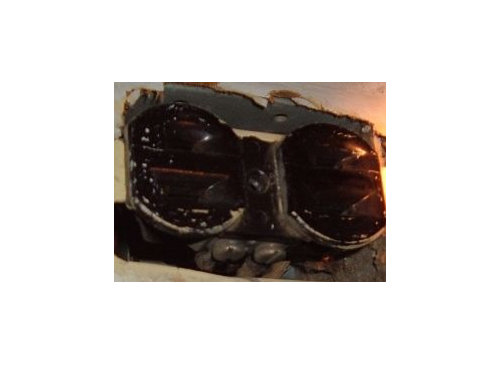Pic of my outlet - will a ground isolator ground it?
jally
13 years ago
Related Stories

GREAT HOME PROJECTSPower to the People: Outlets Right Where You Want Them
No more crawling and craning. With outlets in furniture, drawers and cabinets, access to power has never been easier
Full Story
LIFEAnatomy of a Family-Size Mess
Study your home’s dumping grounds to figure out what organizational systems will work — then let yourself experiment
Full Story
HOUSEKEEPING7-Day Plan: Get a Spotless, Beautifully Organized Garage
Stop fearing that dirty dumping ground and start using it as the streamlined garage you’ve been wanting
Full Story
REMODELING GUIDESBanish Gizmo Blemishes on Your Walls
Unsightly switches, vents and outlets can ruin your interior design's clear complexion. Keep the look pure with an architect's tips
Full Story
CURB APPEAL9 Ways to Boost Winter Curb Appeal
No blossoms and a barren yard? You can still make your home attractive and inviting from the street
Full Story
KITCHEN ISLANDSWhat to Consider With an Extra-Long Kitchen Island
More prep, seating and storage space? Check. But you’ll need to factor in traffic flow, seams and more when designing a long island
Full Story
HOUZZ TOURSMy Houzz: Comfortable Country Style in Cincinnati
Warm colors, extra rooms and plush furniture make a couple's farmhouse-style home worth sharing with guests
Full Story
DECORATING GUIDESAn Expat’s Guide to Making a Home Away From Home
How do you stay balanced when each foot is in a different culture? You take a stand where you hang your hat
Full StorySponsored
Most Skilled Home Improvement Specialists in Franklin County
More Discussions













jallyOriginal Author
petey_racer
Related Professionals
Dover General Contractors · Duncanville General Contractors · Elgin General Contractors · Fargo General Contractors · Fitchburg General Contractors · Glenn Dale General Contractors · Medford General Contractors · Orinda Solar Energy Systems · Tustin Solar Energy Systems · Alum Rock Solar Energy Systems · Detroit Home Automation & Home Media · Naperville Home Automation & Home Media · Newport Beach Home Automation & Home Media · Tacoma Home Automation & Home Media · Yeadon Home Automation & Home MediaRon Natalie
brickeyee
smithy123
petey_racer
smithy123
DavidR
petey_racer
smithy123
hexus
Ron Natalie
jallyOriginal Author
smithy123
ontariojer
DavidR
jallyOriginal Author
DavidR
Ron Natalie
brickeyee
jallyOriginal Author
brickeyee
jallyOriginal Author
brickeyee
ontariojer
DavidR
jallyOriginal Author
DavidR
jallyOriginal Author
DavidR
jallyOriginal Author
brickeyee
jallyOriginal Author